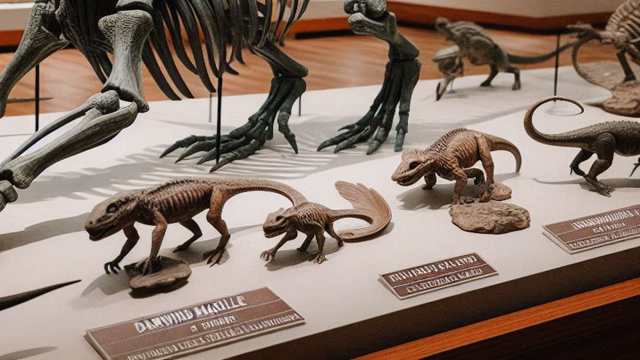In 2009, scientists unveiled an extraordinary fossil in New York that has the potential to be a key link in our understanding of primate evolution. This tiny creature, officially named Darwinius masillae but affectionately called Ida, lived 47 million years ago and is exceptionally well-preserved, missing only a small part of one leg.
The Discovery of Darwinius masillae
The story of Ida’s discovery is as fascinating as the fossil itself. In 1983, private collectors unearthed the skeleton in Germany’s Messel Pit, a site renowned for its rich deposit of Eocene Epoch fossils. However, unaware of its significance, they split the bones into two separate collections. It wasn’t until years later that Norway’s fossil expert, Professor Jorn Hurum, and his team recognized Ida’s importance and dedicated two years to meticulously studying and reconstructing the fossil.
Why Darwinius masillae is Important
Ida’s skeleton provides remarkable insights into early primate evolution. She exhibits several characteristics that are crucial to understanding our own evolutionary history. Although Ida had a long tail like a monkey, she also possessed human-like features such as an opposable thumb, short arms and legs, and forward-facing eyes. Notably, Ida lacked two distinct traits of modern lemurs: a grooming claw and a toothcomb, which is a specialized set of lower teeth used for grooming.
A Glimpse into the Eocene Epoch
Ida lived during a pivotal time in Earth’s history. Around 47 million years ago, the world was undergoing significant changes. Dinosaurs had already been extinct for millions of years, the Himalayas were in the process of forming, and a diverse array of mammals thrived in vast jungles. Ida’s existence during this period provides a snapshot of life as our planet was taking its present shape.
Ida’s Final Moments
The circumstances surrounding Ida’s death and preservation are equally captivating. Researchers theorize that Ida suffered a severe wrist injury, which may have been a contributing factor to her demise. It’s believed that while drinking from the Messel Lake, she was overcome by carbon dioxide fumes emanating from the water. Unconscious, she fell into the lake, and her body sank to the bottom. The unique conditions of the lake bed preserved her remains in extraordinary detail for 47 million years.
What Makes Ida Special
The completeness of Ida’s fossil is unparalleled in the primate fossil record. Professor Hurum emphasized this, stating, “This fossil is so complete. Everything’s there. It’s unheard of in the primate record at all. You have to get to human burial to see something that’s this complete.” This level of preservation allows scientists to study her in unprecedented detail, providing valuable insights into the anatomy and lifestyle of early primates.
The Broader Impact of Ida’s Discovery
Ida’s discovery has profound implications for our understanding of primate and human evolution. Professor Hurum described Ida as “the first link to all humans – truly a fossil that links world heritage.” Renowned naturalist David Attenborough also highlighted the significance of Ida, stating, “The link they would have said until now is missing… it is no longer missing.” Ida’s discovery fills a crucial gap in the fossil record, offering evidence of the evolutionary connections between early primates and modern humans.
The Life of Darwinius masillae
Examining Ida’s gut contents revealed that she was a herbivore, with her last meal consisting of fruits, seeds, and leaves. This dietary information provides additional context for understanding the environment in which she lived and the ecological niches occupied by early primates.
Conclusion: Ida’s Legacy
The unveiling of Darwinius masillae has opened new doors in the study of primate evolution. Ida serves as a critical piece of the puzzle, helping to illuminate the evolutionary path that led to modern humans. Her remarkably preserved skeleton offers a rare and detailed glimpse into the life of an early primate, enriching our understanding of our own origins. As researchers continue to study Ida and other fossils, we can expect even more revelations about the intricate tapestry of life on Earth.

